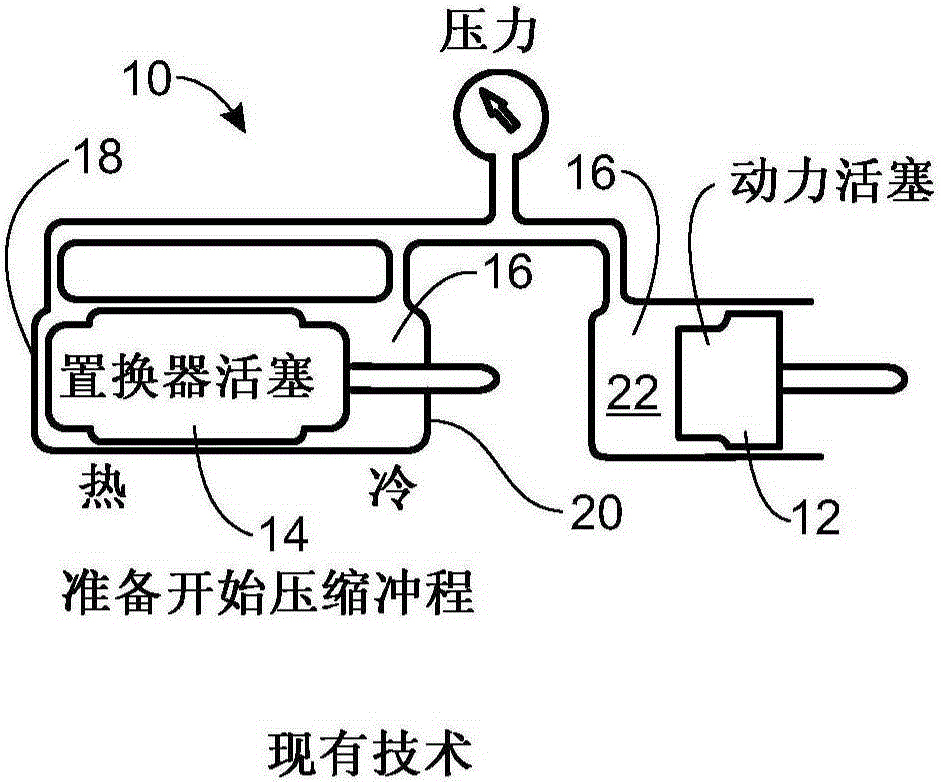Stirling cycle machine
An engine, external combustion technology, used in mechanical equipment, engine components, engine seals, etc., can solve problems such as increasing engine noise, increasing piston wear, and bulky machinery.
- Summary
- Abstract
- Description
- Claims
- Application Information
AI Technical Summary
Problems solved by technology
Method used
Image
Examples
Embodiment Construction
[0116] Stirling cycle machines, including engines and refrigerators, have a long technical heritage and are described in detail in Walker's Stirling Engines, Oxford University Press (1980) Stirling cycle machine, the contents of which are hereby incorporated by reference. The principle of a Stirling cycle engine is the mechanical realization of the Stirling thermodynamic cycle: constant-volume heating of the gas in the cylinder, isothermal expansion of the gas (during which work is done by driving the piston), constant-volume cooling and isothermal compression. Additional background related to various aspects of the Stirling cycle machine and its improvements are discussed in "The Phillips Stirling Engine" by Hargreaves (Elsevier, Amsterdam, 1991), which is also incorporated herein by reference way incorporated into this article.
[0117] refer to Figures 1A-1EThe operating principle of the Stirling cycle machine can be easily described, wherein the same reference numerals a...
PUM
 Login to view more
Login to view more Abstract
Description
Claims
Application Information
 Login to view more
Login to view more - R&D Engineer
- R&D Manager
- IP Professional
- Industry Leading Data Capabilities
- Powerful AI technology
- Patent DNA Extraction
Browse by: Latest US Patents, China's latest patents, Technical Efficacy Thesaurus, Application Domain, Technology Topic.
© 2024 PatSnap. All rights reserved.Legal|Privacy policy|Modern Slavery Act Transparency Statement|Sitemap



